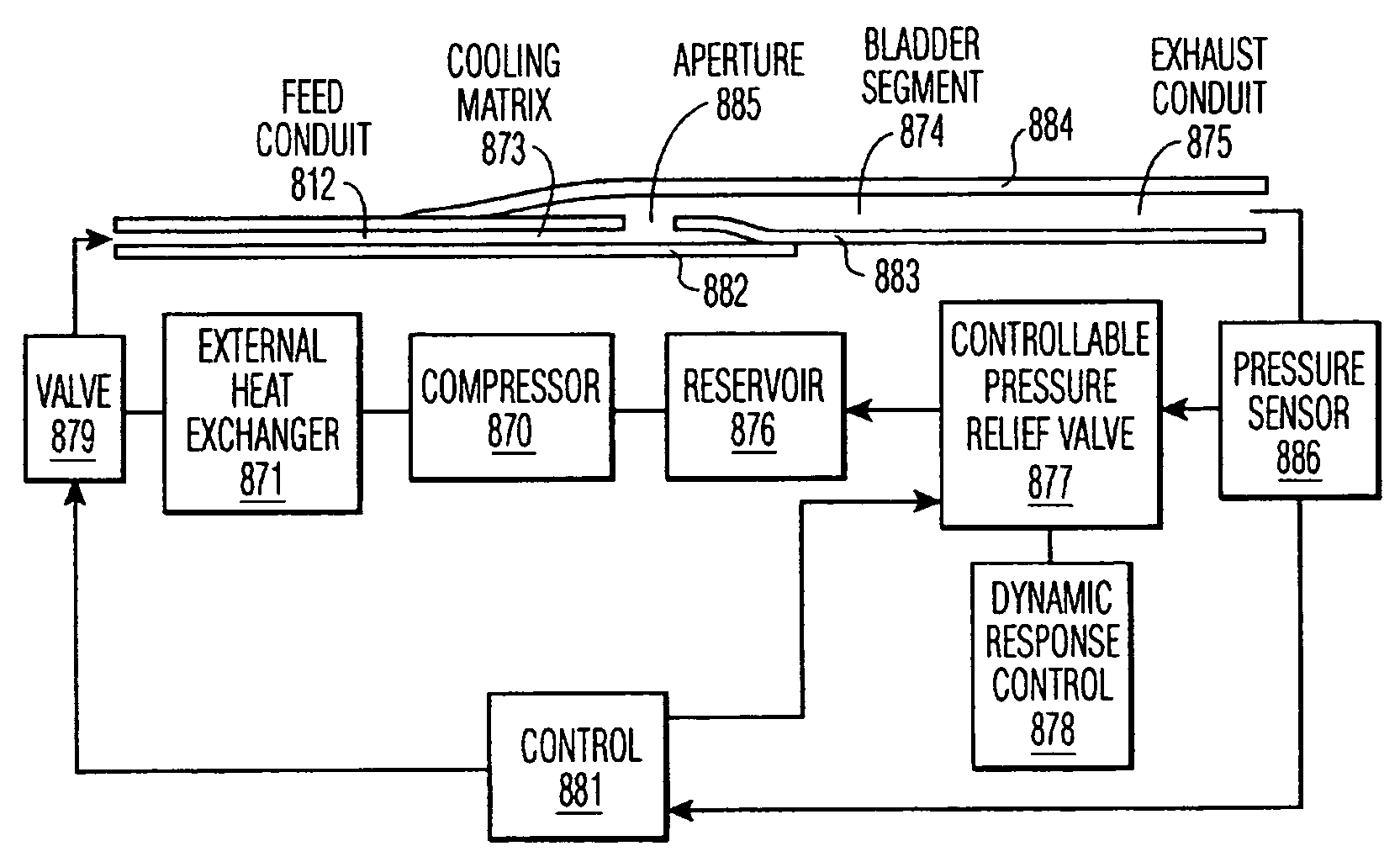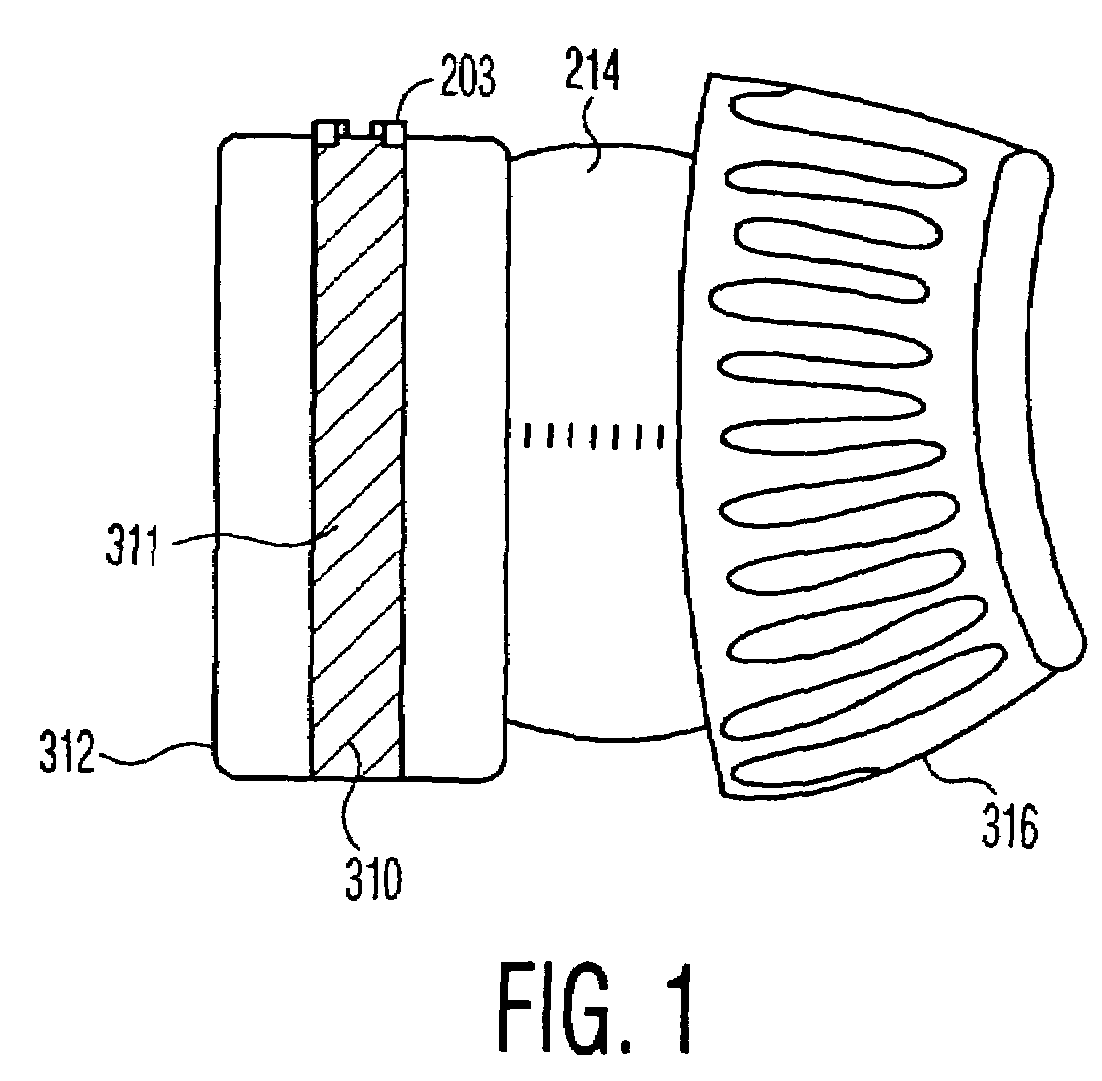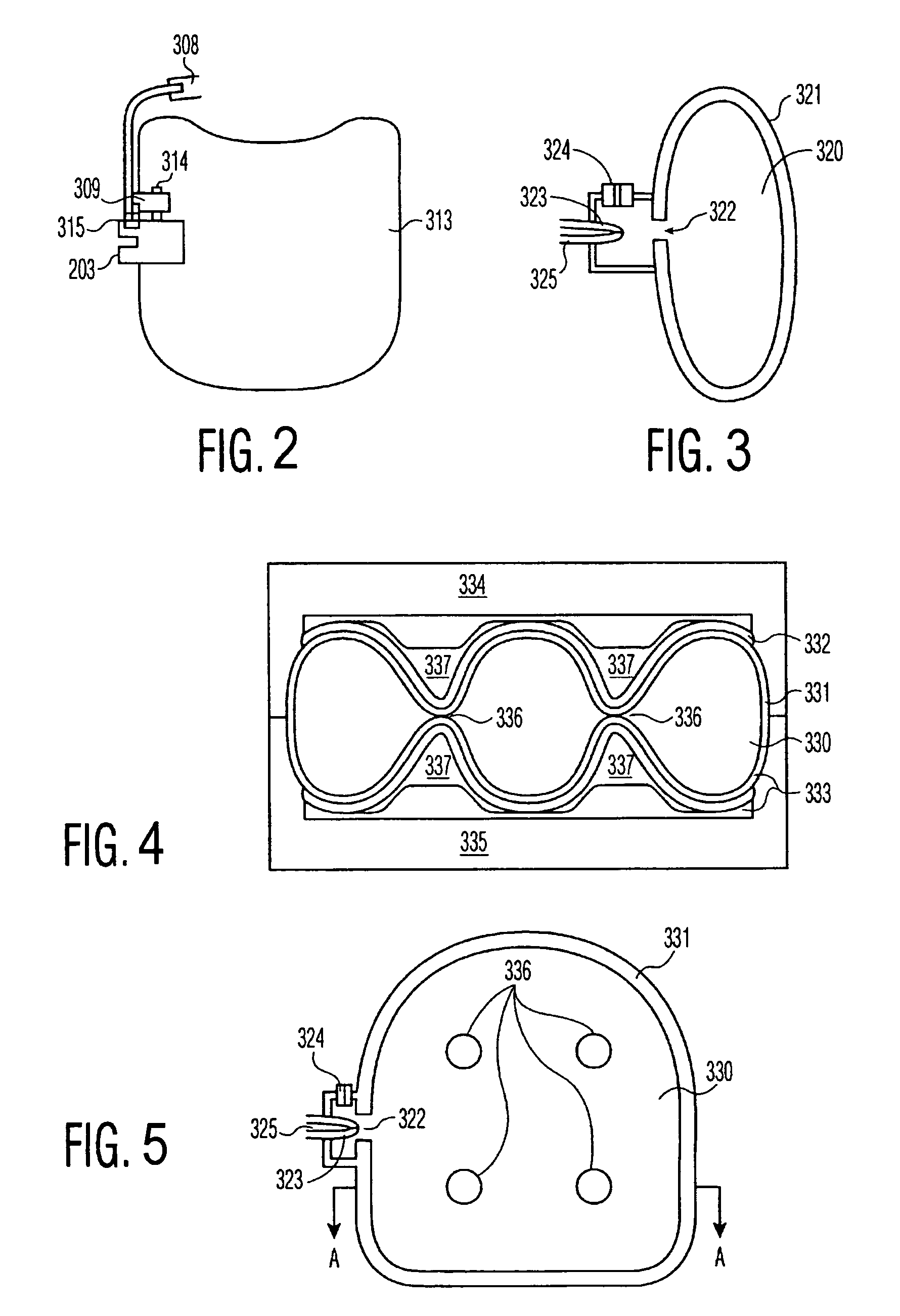Adaptively controlled footwear
- Summary
- Abstract
- Description
- Claims
- Application Information
AI Technical Summary
Benefits of technology
Problems solved by technology
Method used
Image
Examples
example 1
Cooled Footwear
[0160]In garments or footwear, the operating temperatures are generally about 30–45 degrees C. on the body side and about −20–+40 degrees C. on the external side. In general, cooling may be desired when the body temperature is above 37 degrees C. and the external temperature is above 10 degrees C. Below these temperatures, cooling by active or facilitated means may not be necessary or desirable.
[0161]It should also be noted that after a short period, footwear reaches a temperature steady state, with the metabolic heat from the foot transferred to the environment, so that the rate of production equals the rate of withdrawal. Therefore, in an active or facilitated heat removal system, the amount of heat to be radiated is of the same order of magnitude of heat shedding as a normal shoe. Thus, the radiator need not be very large in comparison to the shoe, nor operate at substantially elevated temperatures over that normally achieved in a shoe under normal circumstances.
[0...
example 2
Adaptive Fit Footwear, Pressurized Bladders in Upper
[0216]According to another embodiment of the invention, a set of inflatable bladders are formed in the footwear upper. These bladders may be inflated with air, refrigerant, or liquid. The bladders are formed of two layers of a high modulus polymer film, for example polyester film (e.g., Mylar®) with conduits formed integral to the heat sealing pattern to a control system, which is, for example, embedded in the sole. Advantageously, a cooling system is provided which removes heat from below the bladder system. Thus, according to one embodiment, a volatile refrigerant flows through a maze pattern segment formed between a first and second layer of heat-sealed film. The terminus of the maze pattern segment is an aperture formed through one of the film layers, leading to a bladder segment formed between a second and third layer of heat sealed film.
[0217]The bladder segment has a conduit formed by an elongated potential space between the...
example 3
Adaptive Fit Footwear, Adjustable Tensioners
[0230]As shown in FIGS. 18–30, footwear is provided with an upper fit controlled by a set of hydraulic actuators 701–705. These actuators 701–705 control the tension on a set of straps 707–711 on the upper, which assure a proper fit. The pressure in each actuator 701–705 is measured by a pressure sensor 767. A set of strain gages (not shown) integrated into the upper or straps 707–711 may also be used to determine the fit of the shoe 700.
[0231]The actuators 701–705 receive pressurized fluid from a hydraulic compressor 755, which selectively communicates to each actuator 701–705 through check valve 759, line 760 and rotary valve 761. The rotary valve 761 is driven by an electrical actuator, for example a shape memory actuator, controlled by the control module 754. A reservoir 756 is provided for hydraulic fluid, which is, for example, an ethylene glycol antifreeze or mineral oil. The strap 764, is noncompliant, and driven by the stretch of ...
PUM
 Login to View More
Login to View More Abstract
Description
Claims
Application Information
 Login to View More
Login to View More - R&D
- Intellectual Property
- Life Sciences
- Materials
- Tech Scout
- Unparalleled Data Quality
- Higher Quality Content
- 60% Fewer Hallucinations
Browse by: Latest US Patents, China's latest patents, Technical Efficacy Thesaurus, Application Domain, Technology Topic, Popular Technical Reports.
© 2025 PatSnap. All rights reserved.Legal|Privacy policy|Modern Slavery Act Transparency Statement|Sitemap|About US| Contact US: help@patsnap.com



